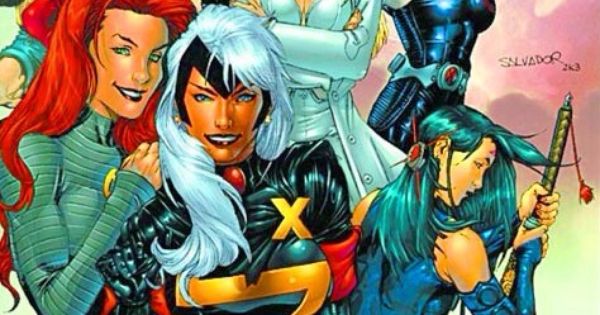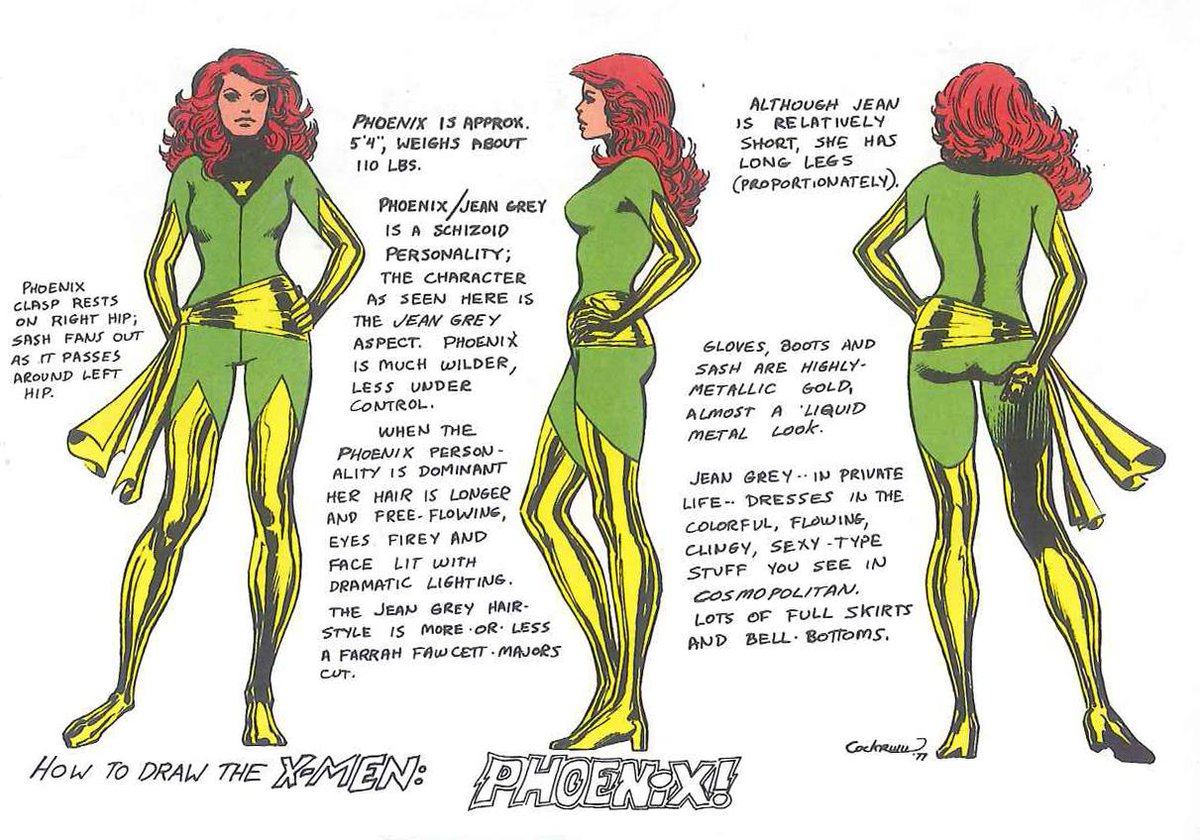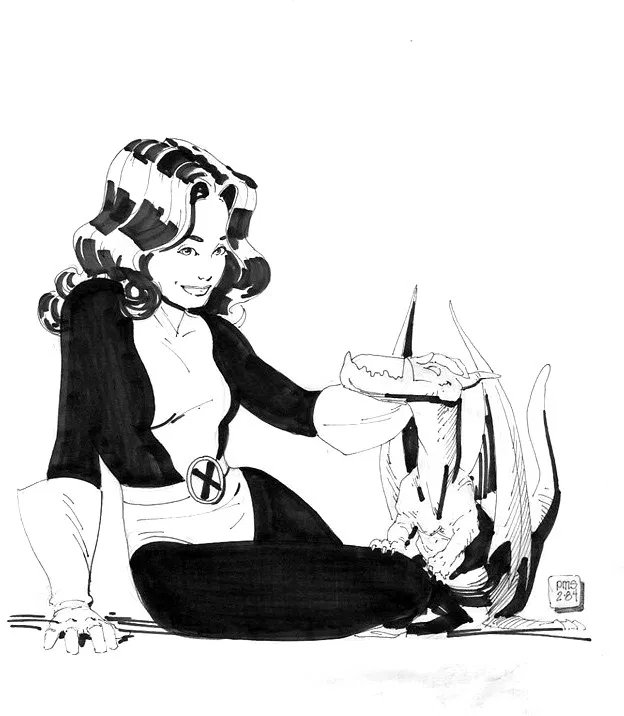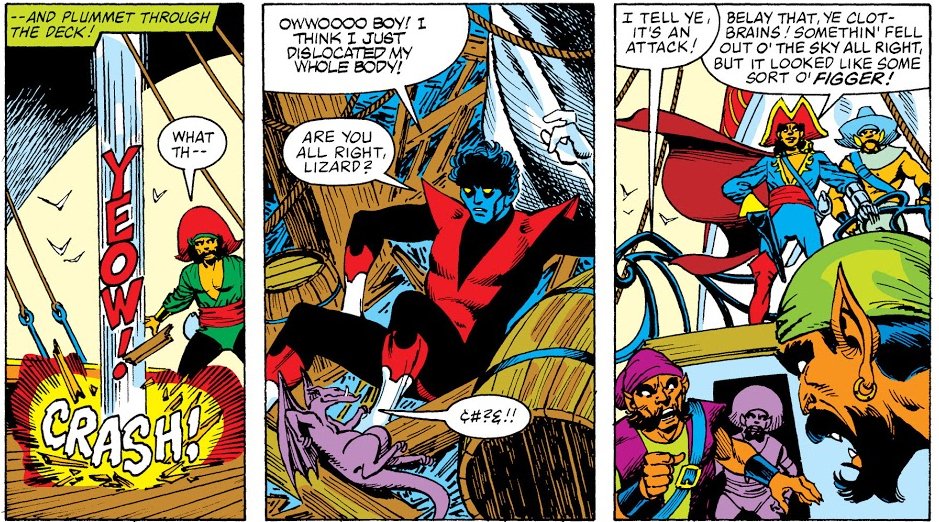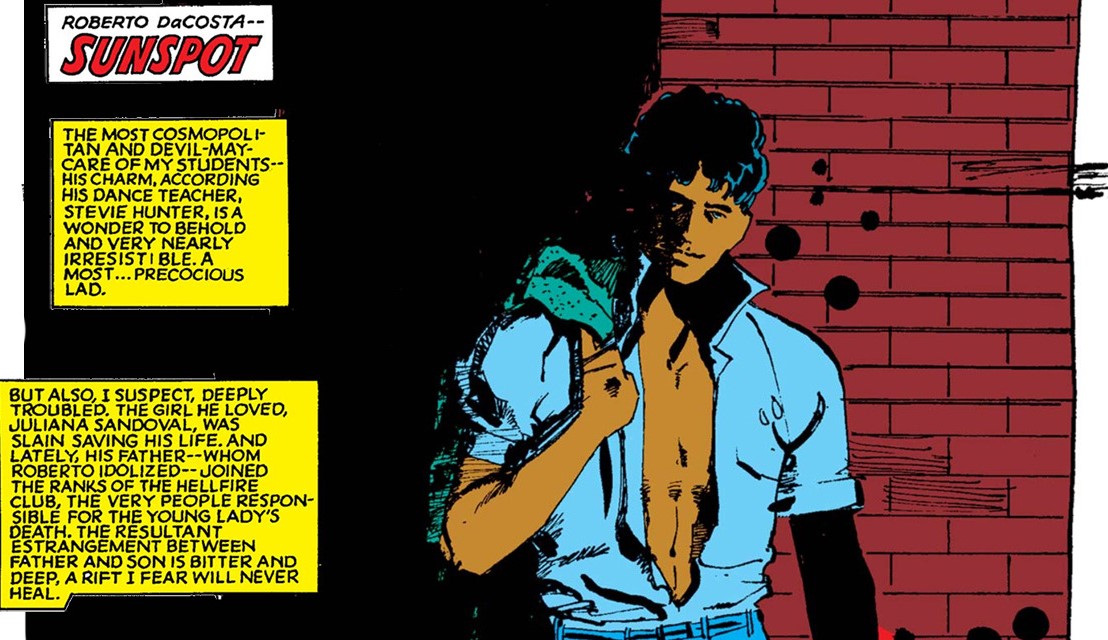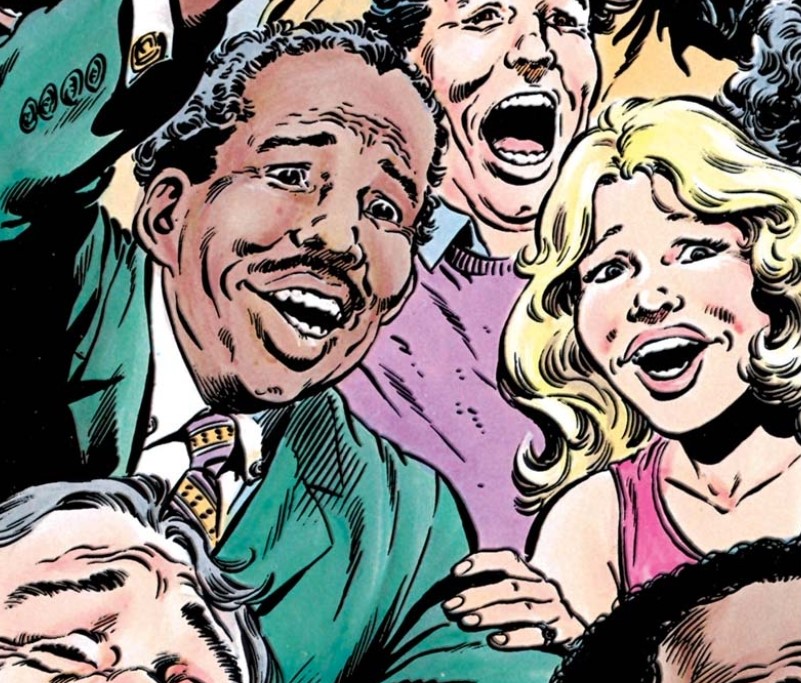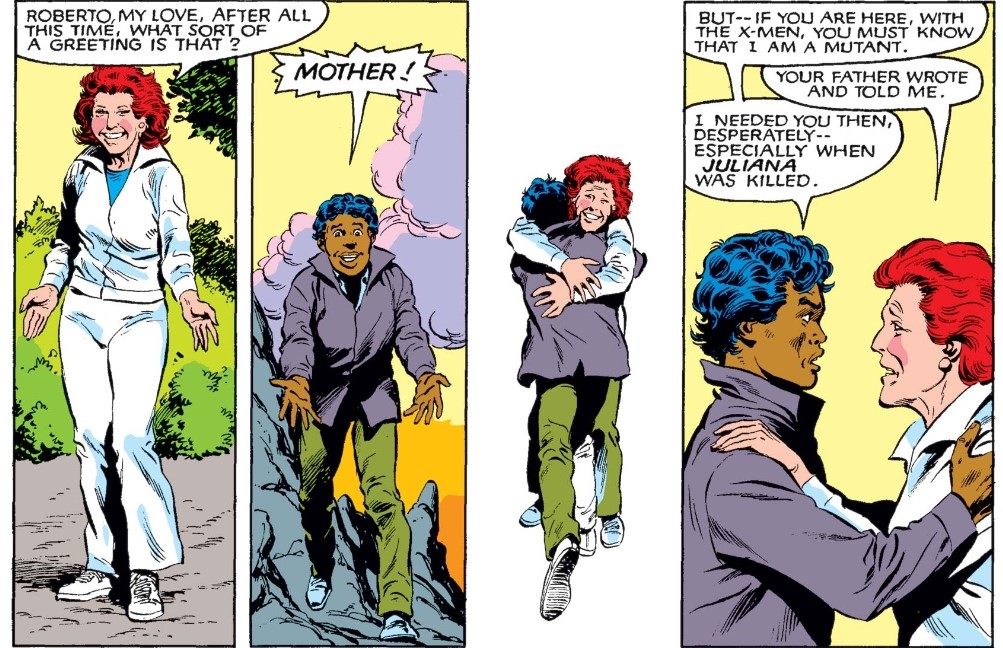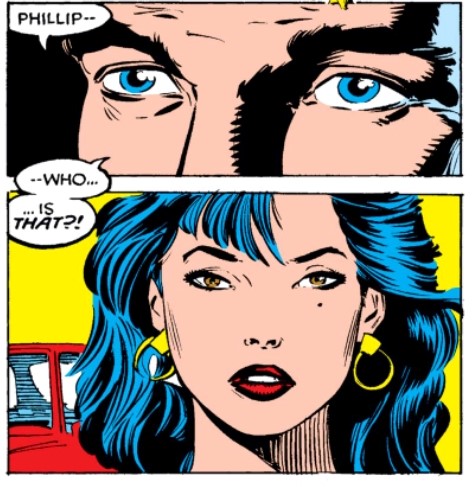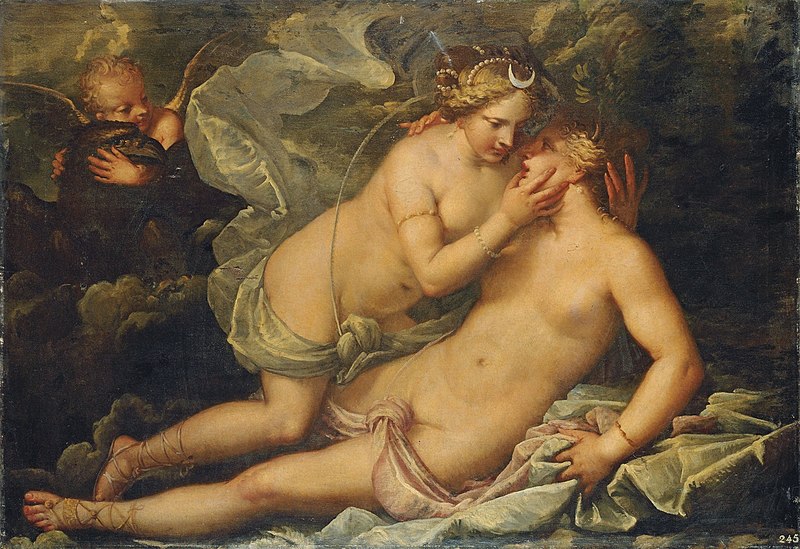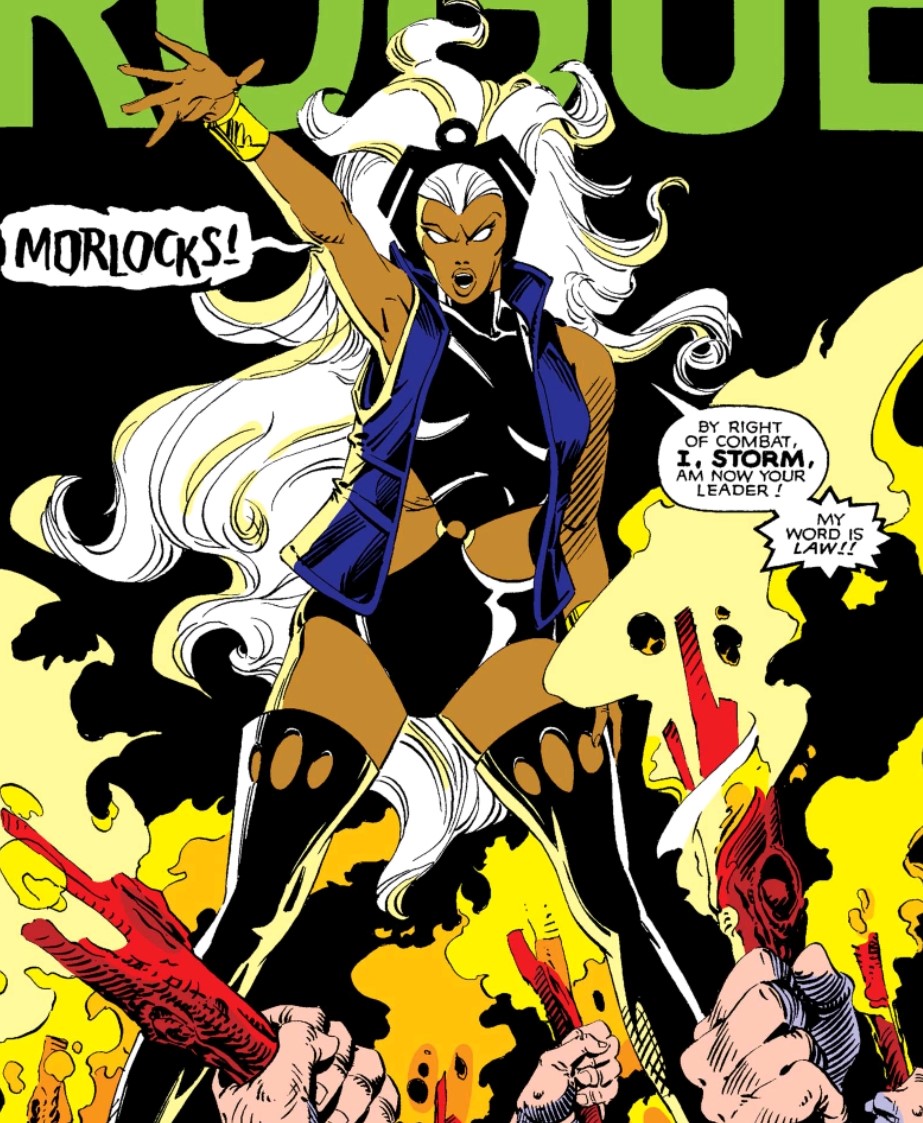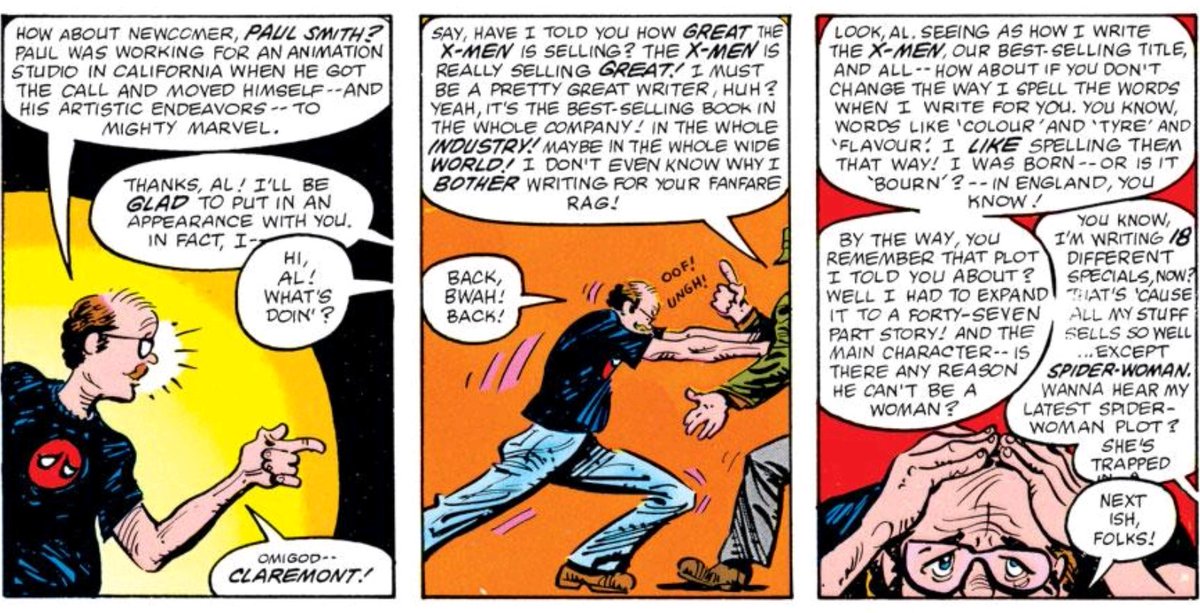
Though only briefly glimpsed at in the pages of X-Men comics, Captain Britain’s relationship to Meggan in Excalibur offers a poignant portrayal of a toxic and dysfunctional coupling in superhero comics. #xmen #excalibur 1/8 

While there’s actually a pretty rich tradition of such relationships in superhero comics (Harley/Joker, Wasp/Giant Man, Reed/Sue), Brian/Meggan demonstrates a lot of self-awareness and utilizes superhero identity components to enhance the symbolism. 2/8 

Meggan’s power set (empathic metamorph) serves as a metaphor. She changes her body to match the desires of those around her. In this she is quite literally adopting the toxic trait of defining herself through what her partner wants her to be. 3/8 

Furthermore, Brian’s relationship with Meggan can be read as an extension of his existing hedonistic and self-destructive behaviour in the wake of an existential crisis (he died and was resurrected, then lost his sister). He is deeply depressed and treating it with alcohol. 4/8 

What makes the story compelling is that Brian is a superhero (portrayed somewhat sympathetically), but completely in the wrong here. He is making terrible and damaging choices, but he’s doing so in direct consequence of his depression and PTSD. 5/8 

Claremont accentuates this nuanced emotional portrayal by highlighting the community of Excalibur watching this unfold and constantly having to console Meggan whilst knowing that this relationship is not in her best interest. 6/8 

Revisited within the sexual politics of 2021 (as part of ongoing discussions on grooming and emotional abuse) Brian/Meggan holds up surprisingly well as a narrative of a self-serving male authority figure emotionally abusing his vulnerable partner who deserves better. 7/8 

Relatedly, I’m working with Chris Maverick and Anna Peppard (@GoshGollyWow) on an issue by issue podcast on Excalibur. Our website and first episode is up now: goshgollywow.com/f/episode-0-or…
• • •
Missing some Tweet in this thread? You can try to
force a refresh


